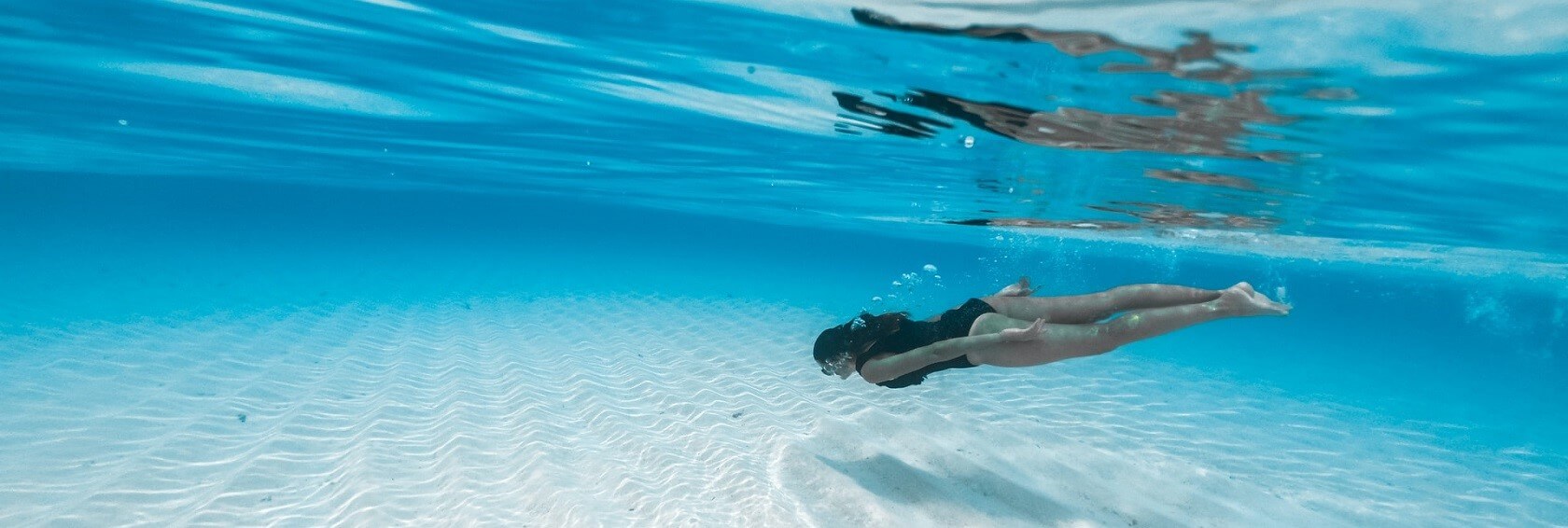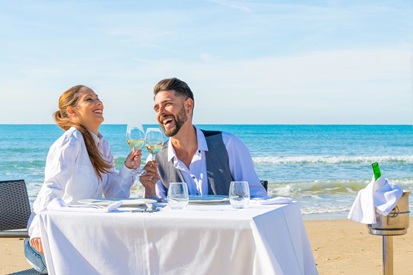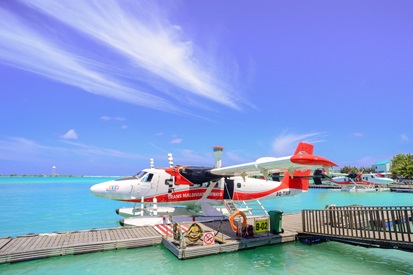

Snorkeling in the Maldives, alongside diving, has always been, is, and will remain a favorite activity for tourists. The secret lies in the extraordinarily rich underwater world of the Indian Ocean and the stunning natural conditions of the reef islands. What is snorkeling? Why is it so popular? Where are the best places to snorkel in the Maldives, and how much might this activity cost? Here’s everything you need to know, step by step.

Depositphotos
What is Snorkeling
A snorkel (from German Schnorchel) is a breathing tube used for swimming near the water’s surface. Hence the name of this engaging activity—snorkeling. It’s a form of scuba diving with shallow immersion (up to 10 meters). Like freediving, snorkeling is a type of diving, centered on observing underwater creatures in their natural habitat. Snorkeling is highly popular in tropical regions, including the Maldives.

Innahura Maldives Resort
Snorkeling Equipment
In warm waters, it’s comfortable to dive without additional clothing or gear. Swimming with a mask in the Maldives, as in other regions, requires just a few items: a mask, a snorkel, and fins if needed. As a reminder, the Maldives enjoys water and air temperatures ranging from +28 to +32 °C year-round.
Almost every resort island has a dive center where you can rent snorkeling equipment, sometimes even for free. Some hotels have shops where you can purchase gear. Local islands in the Maldives also have dive centers and shops for divers.
Note: Local islands are inhabited by residents. Typically, they offer 3- or 4-star hotels and guesthouses. For luxurious beach or overwater villas, look to private island resorts. Regardless of your choice, excellent snorkeling opportunities are available on both local and private islands.

Depositphotos
How to Choose Snorkeling Gear
Mask. This is the core piece of equipment, and its comfort doesn’t necessarily depend on price. There are both expensive and budget-friendly brands with similar quality. To find the right mask, try it on: press it firmly to your face, inhale through your nose, and remove your hand. A properly sized mask won’t slip.
A good mask should have:
- The word “Tempered” (or simply “T”) on the glass, indicating tempered glass lenses.
- An elastic skirt that seals tightly against your face.
- A wide field of view. Choose a mask with a transparent silicone skirt, as colored edges can distract and limit visibility.
- A small internal volume.
To prevent fogging, treat the inner glass with an antifog solution before use. Experienced swimmers suggest simply coating it with saliva.
Snorkel. Equally important for snorkeling. You can swim with just a mask, holding your breath during dives, but a mask-snorkel combo conserves energy. The snorkel shouldn’t be too long, as this complicates breathing, nor too short, as it’s harder to manage during dives. Opt for a medium length.
Important! You can choose a snorkel with a purge valve to expel water that enters from splashes. Alternatively, select one with a detachable mouthpiece. Always test the snorkel to ensure it doesn’t hinder breathing while swimming.
Fins. Not essential, especially in shallow waters. Fins enhance maneuverability, increase speed, and save energy during dives and ascents. Choose lightweight, moderately sized fins to avoid weighing down your legs. Good diving fins can also work for snorkeling.

Depositphotos
Best Snorkeling Spots in the Maldives
The best snorkeling in the Maldives is where you can encounter a wide variety of marine life. The tropical waters of the Maldives archipelago teem with colorful and unique fish: parrotfish, butterflyfish, clownfish, barracudas, and moray eels. Snorkelers can also spot turtles, manta rays, stingrays, nurse sharks, and reef sharks. The corals here are equally diverse, nourished by warm Indian Ocean currents that bring nutrient-rich plankton, fostering young coral gardens.
The quality of snorkeling depends heavily on the region and the reef’s condition. A vibrant, living reef—where corals thrive—hosts an abundance of marine fauna.
Snorkeling can be done at your resort’s house reef or through organized trips. A great house reef offers more freedom for independent snorkeling, while trips to other islands often require additional time and transfer costs.

Depositphotos
Best Hotels for Snorkeling in the Maldives
Snorkeling is possible on both private and local islands in the Maldives. However, private islands typically boast more vibrant house reefs, as owners select locations with rich flora and fauna and maintain or enhance the reefs. Recently, resorts have increasingly opened research centers to study reefs and cultivate new corals—an educational and popular activity among tourists. Below is a list of Maldives resorts with exceptional living reefs.
Bandos Island Resort and Spa
Bandos Island Resort and Spa is a 4-star hotel and an excellent budget-friendly option with a remarkable house reef. Villas at Bandos sell out 4-6 months before the season begins, thanks to its ideal balance of price and quality. This classic Maldivian resort offers beach and overwater villas, with or without pools. Its standout feature is the vibrant, colorful house reef teeming with tropical fish. The island also has a top-notch dive center for those interested in deeper dives.

Bandos Island Resort and Spa
Lily Beach Resort and Spa
Lily Beach Resort and Spa is a 5-star hotel on a sizable island with 125 villas, suites, and residences, both beachside and overwater, with or without pools. It offers a wide range of entertainment, restaurants, and bars. Romantic and popular with honeymooners, the resort hosts beautiful wedding ceremonies.
Lily Beach’s house reef is among the most vibrant and diverse in the Maldives. Despite its 5-star status, the pricing is reasonable, with an all-inclusive plan covering three meals daily, drinks, snacks, and complimentary activities, including snorkeling gear. This is our top recommendation for honeymooners.

Lily Beach Resort & Spa
Vilamendhoo Island Resort
Vilamendhoo Island Resort is a 4-star Superior hotel. Part of the island is adults-only, while families with children can stay in a separate area. It offers beach and overwater villas, pools, and numerous restaurants and cafes.
The island’s elongated shape makes its house reef particularly fascinating to explore, with flora and fauna that exceed expectations. Manta rays frequent the area, and whale and reef sharks live nearby, making it a diver’s paradise.

Vilamendhoo Island Resort
Ellaidhoo Maldives by Cinnamon
Ellaidhoo Maldives by Cinnamon is a 4-star hotel on a small island with just over 100 beach and overwater villas. While villas lack private pools, there’s a large communal pool. It’s ideal for those seeking excellent snorkeling, affordable lodging, and seclusion away from crowds.
Despite its size, the island boasts a substantial and vibrant house reef, alive with color.

Ellaidhoo Maldives by Cinnamon
Dusit Thani Maldives
Dusit Thani Maldives is a 5-star Superior hotel located on Baa Atoll, a UNESCO-protected area encompassing the Hanifaru Nature Reserve. Baa Atoll is synonymous with top-tier snorkeling, with thriving lagoons, waters, and reefs. Dusit Thani’s house reef is among the best in the Maldives and the atoll itself. Manta rays are frequent visitors, considered a lucky sighting.
The luxurious reef is complemented by the resort’s opulence: lavish villas with pools, panoramic windows, designer interiors, premium finishes, and restaurants led by top chefs. The hotel frequently ranks among the world’s best resorts.

Dusit Thani Maldives
W Maldives
W Maldives is a 5-star Deluxe resort, one of the most luxurious and captivating in the Maldives. Located on Ari Atoll, rich in corals and marine life, the island’s shape creates ideal snorkeling conditions. The house reef is stunning, with overwater villas positioned along the lagoon—book these for direct reef access.
All villas feature large private pools, spacious rooms, designer interiors, and high-quality finishes and furnishings. W Maldives consistently delivers top-tier experiences.

W Maldives
Snorkeling in Hanifaru Bay
The most popular snorkeling destination in the Maldives is Hanifaru Bay on Baa Atoll. It’s part of the only marine reserve in the Maldives listed as a UNESCO World Heritage Site.
Hanifaru Bay offers snorkeling amidst breathtaking ocean scenery and the chance to observe numerous manta rays, which flock to the bay to feed on blooming plankton. Many Baa Atoll resorts offer snorkeling trips to Hanifaru, enhancing their appeal. Note that diving is prohibited here, but nearby dive spots—among the world’s most spectacular—are accessible.

Milaidhoo Island Maldives Resort
Snorkeling Season in the Maldives
Snorkeling in the Maldives is enjoyable year-round, but the best time is from late December to March, during the northeast monsoon. Starting in June, the southwest monsoon brings rainy season.
Late December to early March is the high season, with minimal rainfall, calm seas, and crystal-clear turquoise waters, making it ideal for snorkeling. During the rainy season, snorkeling is still possible, with vibrant corals and fish, but visibility may be less pristine. Rain in the Maldives is typically short-lived, followed by sunshine.
For manta ray sightings, visit during the rainy season when winds bring more plankton to the lagoons, attracting mantas. Alternatively, choose a resort near manta hotspots, as listed in resorts ideal for swimming with manta rays.

Depositphotos
Snorkeling in the Maldives: Underwater Dangers
The Maldives’ underwater world is rich with natural wonders, evident in photos taken by snorkelers and divers. While reef inhabitants are beautiful, some pose risks to humans:
- Corals. Some coral species have sharp, toxic edges, causing slow-healing cuts. Treat scratches with antiseptic.
- Stonefish. Resembling dead coral, this fish’s venomous spines can cause severe pain or even be fatal if stepped on.
- Sea Urchins. These resemble underwater flowers with long, fragile spines. Stepping on one may leave a splinter requiring medical removal.
- Sea Anemones (Actinia). Stunning but capable of burning human skin on contact. Treat burns with lemon juice.
- Lionfish. Beautifully striped but dangerous, their venomous spines can cause respiratory paralysis or death if provoked.
If you encounter any of these issues while snorkeling, seek medical attention immediately.

Depositphotos
Safe Snorkeling Rules in the Maldives
To ensure a pleasant snorkeling experience, follow these basic safety rules:
- Avoid touching marine life or corals with your hands.
- Don’t snorkel alone, especially as a beginner, as you may miss changes in currents.
- Wear a life jacket if you’re not confident in the water.
- Use special footwear to protect your feet from sharp coral edges.
- Maintain a distance of 1.5-2 meters from unfamiliar fish or marine creatures.
- Follow the advice of local marine guides, who know the reefs well and can recommend the best spots.

Sebastian Pena Lambarri
How Much Does Snorkeling Cost in the Maldives
Snorkeling on a house reef typically costs $8 to $15 per day for equipment rental. Excursions with transfers range from $30 to $60, depending on the distance. Many private resorts, especially 5-star and above, may provide snorkeling gear for free. Check with our manager during booking to learn about complimentary services at your chosen hotel.
Good to Know:
- Many resorts offer free snorkeling equipment for the entire stay or complimentary transfers to nearby coral gardens.
- For avid snorkelers, staying in an overwater villa with direct water access is ideal.
- When selecting a hotel, confirm whether it has a quality house reef or choose one from the list above.

Depositphotos
Do You Need a Certificate for Snorkeling?
Snorkeling is an amateur activity at shallow depths. Beginners should heed instructors’ advice, follow safety protocols, and learn to select proper gear, but no formal certification is required. It’s much simpler than preparing for diving.
Resorts have instructors who can teach snorkeling basics, conduct trial swims, and assist with equipment selection.
Snorkeling is a fantastic way to enjoy active leisure in the Maldives. Engaging with the ocean’s nature boosts your spirits, offers new experiences, and provides a refreshing escape from routine!

Meeru Island Resort & Spa
More articles
- Bali for Two: 24 Romantic Getaway Ideas
- Top 20 Bali Tours: Itineraries, Offers, and Prices
- Bali's Best Beach Clubs - 13 Luxury Oases
- Tips for tourists in Indonesia - how to avoid spoiled holidays
- Yoga Studios in Bali - where to catch Zen on the Island of the Gods
- Port Louis: All About Mauritius' Capital
- Seychelles Honeymoon Hotels: 9 Paradise Spots
- Bali's Best Eco-Hotels: Top 12 Spots
- Seychelles for outdoor activities - from diving to jungle trekking
- Why you can be deported from Bali - several main reasons



